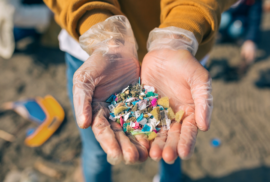Lake Erie algal bloom plan needs more punch

Authored by
A recent draft plan to make Lake Erie healthier and bluer could continue to leave algae green. Michigan residents can join the Michigan Environmental Council and other advocates to help improve it.
In April, after weeks of research and collaboration, the Michigan Environmental Council sent in a sign-on letter with allies to the state of Michigan. They asked for revisions to its adaptive management plan for Lake Erie’s high nutrient levels during a public comment period, which is open to all Michiganders until June 19.
The plan was meant to be a call to action to reduce the lake’s phosphorus levels 40% by 2025. Instead it was a call to the status quo—continual testing and voluntary regulation rather than direct, novel action—said Tom Zimnicki, Environmental Council program director for groundwater, surface water and agriculture.
“While we certainly support continual improvement and reevaluating strategies, we question how long this process will continue before the state decides that incremental changes inherent to adaptive management are not sufficient,” he said.
Otherwise, Zimnicki added, the state will not hit its phosphorus reduction goals. The nutrient has overloaded Lake Erie through manure and fertilizer runoff. In high levels, phosphorus sickens ecosystems, creates aquatic dead zones and taints drinking water.
About 11 million people use Lake Erie as a source of drinking water, and millions more use it as tourists and vacationers.
Environmental Council member groups Environmentally Concerned Citizens of South Central Michigan and Alliance for the Great Lakes; and allies Sierra Club Michigan Chapter and Michigan League of Conservation Voters urged the state to replace voluntary nutrient mitigation plans with enforceable plans and to adopt easily implementable steps to achieve nutrient reduction goals.
Discover
Power environmental change today.
Your gift to the Michigan Environmental Council is a powerful investment in the air we breathe, our water and the places we love.
Sign up for environmental news & stories.
"*" indicates required fields




